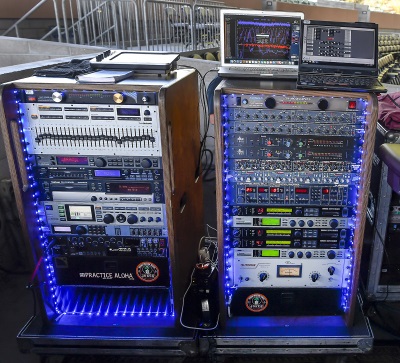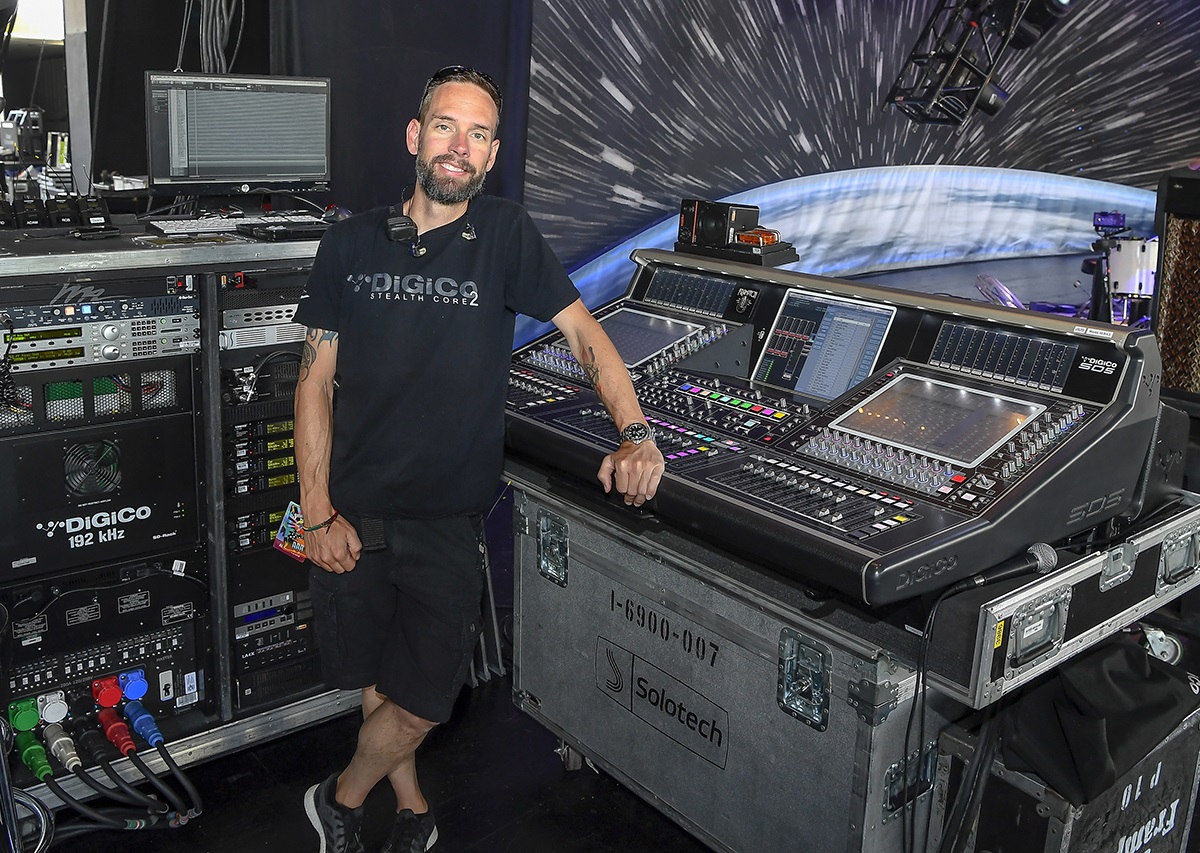
“To make the room drawing match reality as accurately as possible, we’re also employing six AlignArray3 laser inclinometers, one on the top of each array of K1/K2 and one on the top of the Kara hangs,” Brady adds. “The last two are used on the first K2 box in the array to verify that the split between the K1 and K2 matches the drawing.”
The system is driven through an APB-Dynasonics MixSwitch multi-channel switcher/combiner with an expansion unit. The front fill channels pass through a Lake LM44 processor before going down the drive lines so that there are separate lines for existing delay loudspeakers, video feeds and hearing-impaired lines.
“As far as tuning goes, we utilize (Rational Acoustics) Smaart version 8 through a Focusrite Scarlett interface in tandem with two Earthworks M30 reference mics,” he explains. “Tom and I use both microphones in conjunction with one another to make sure the EQ and phase traces match in every seat.”
Frampton FOH Jim Yakabuski
I received a call about three years ago asking if I was available to take a quick two-and-a-half week break from my “day job” at NewSpring Church in Anderson, SC to fill in mixing FOH for Frampton, and I jumped at the opportunity. It was a wonderful (albeit short) run mixing an amazing and highly polished group of musicians. In 2016 I had another chance to do it, this time for the entire summer.
Mixing Peter Frampton and bandmates Rob Arthur (keys/guitars/vocals), Adam Lester (guitars/vocals), Dan Wojciechowski (drums) and David LaBruyere (bass) has been one of the highlights of my career. We all know what it’s like to pull every audio trick you have out of the bag in the attempt to make a band of “lesser” skills sound like something better than they are. Well, this is 180 degrees the opposite. Peter and his band are amazing, so my main goal every night is to represent what they’re sending down the snake lines, and then get out of the way.
As I mentioned at the outset, I’m working on a digital console that can do just about everything but I run it in the most straightforward “analog” way imaginable. No snapshots and no double buses for anything. The inputs are routed to the master bus, and away we go. The only “trickery” is some double channel assigning of the kick drum, bass guitar and Peter’s vocal for a little bit of tone control, but aside from that I keep it very simple.
After Tom tunes the PA, I employ a pair of Lake LM44s to touch up any zone EQ that I feel I’d like to fiddle with, and then use Waves Tracks Live for virtual sound check, and it’s a bit more important because the band hasn’t been sound checking much lately. I make good use of the console’s internal vocal delay and reverb exclusively, as well as all internal comps and gates. Sometimes I insert a Waves-SSL master bus compressor to hold the mix in check if we’re dealing with one of the many venues that enforce a tight SPL limit, and might apply some Waves C6 compression across Peter’s vocals to control the 3 kHz and 200 Hz areas a bit.
Frampton Monitor Engineer Matt Fitzgerald
Fitzgerald is not only a superb monitor engineer, he also brews a great beer in the basement of his house. His brews have gone to the finals of several brewmaster competitions, so he’s for real. Oh, and he’s climbed to base camp at Mount Everest. Most of us have a hard time just climbing out of our bunks in the morning.

